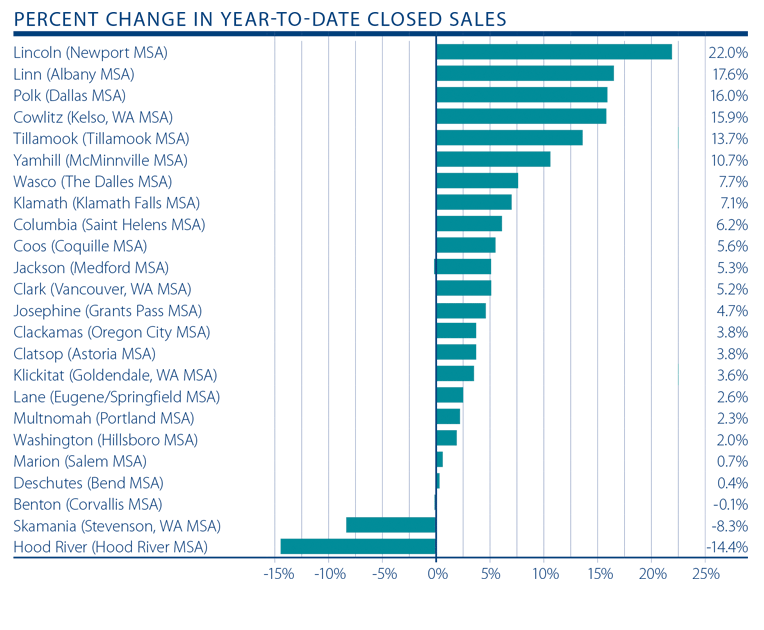Windermere Real Estate is proud to partner with Gardner Economics on this analysis of the Oregon and Southwest Washington real estate market. This report is designed to offer insight into the realities of the housing market. Numbers alone do not always give an accurate picture of local economic conditions; therefore our goal is to provide an explanation of what the statistics mean and how they impact the Oregon and Southwest Washington housing economy. We hope that this information may assist you with making an informed real estate decision. For further information about the real estate market in your area, please contact your Windermere agent.
Regional Economics
Job growth in the Oregon market areas contained in this report continues to pick up steam with a total of 41,809 jobs added in 2014 —this represents an annual growth rate of 2.4 percent. In the fourth quarter alone, 14,833 jobs were added to the economy.
When compared to a year ago, the growth in employment was most prevalent in Multnomah County where employment rose by 10,800 jobs. This was followed by Clark County which saw total employment rise by 6,200, and Washington County rounded out the top three with an increase of 3,600 jobs.
Versus September of 2014, we did see job losses in half of the counties surveyed; however this is not a concern as the data used is not adjusted for seasonality and, therefore, it is not surprising to see some losses. The largest decline in employment in the last three months was seen in Marion County where over 3,000 jobs were lost. Additional substantial losses were seen in Lincoln County where employment declined by 1,080 positions. In total, 2014 was not a bad year and exceeded my forecast for the addition of 35,000 jobs.
As I stated in my last report, given the improving job market seen in 2014, it is not surprising to see the unemployment rate continuing to drop in every county discussed in this report. The lowest unemployment rate was in Benton County at 4.7 percent, and the highest in Klamath County, where 9.7 percent of the labor force was out of work.
Given the job losses that were seen in the quarter, when we compare the latest data to that seen in September we note that the unemployment rate rose in 19 of the 24 counties surveyed. Again, we can put this down to seasonal layoffs; it is not indicative of a long-term trend. The average unemployment rate across the region has now shrunk from 7.6 percent to 6.9 percent which is not bad at all.
I am still maintaining the “C+” grade that I have given the region for each quarter in 2014. The numbers are improving, but the unemployment rate is still higher than I would like to see.
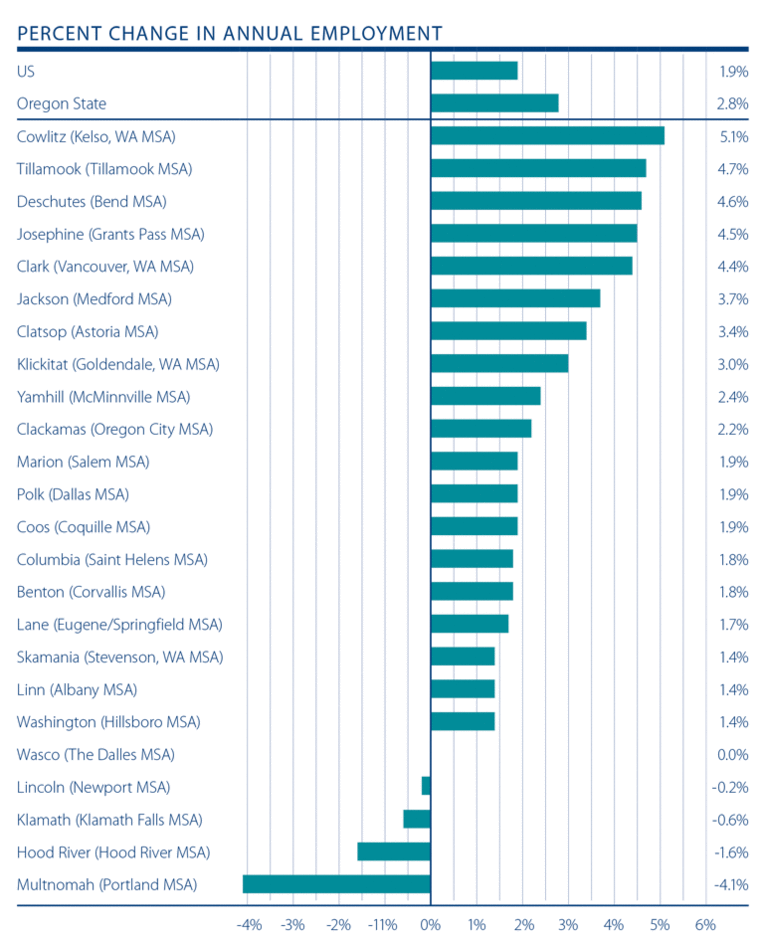

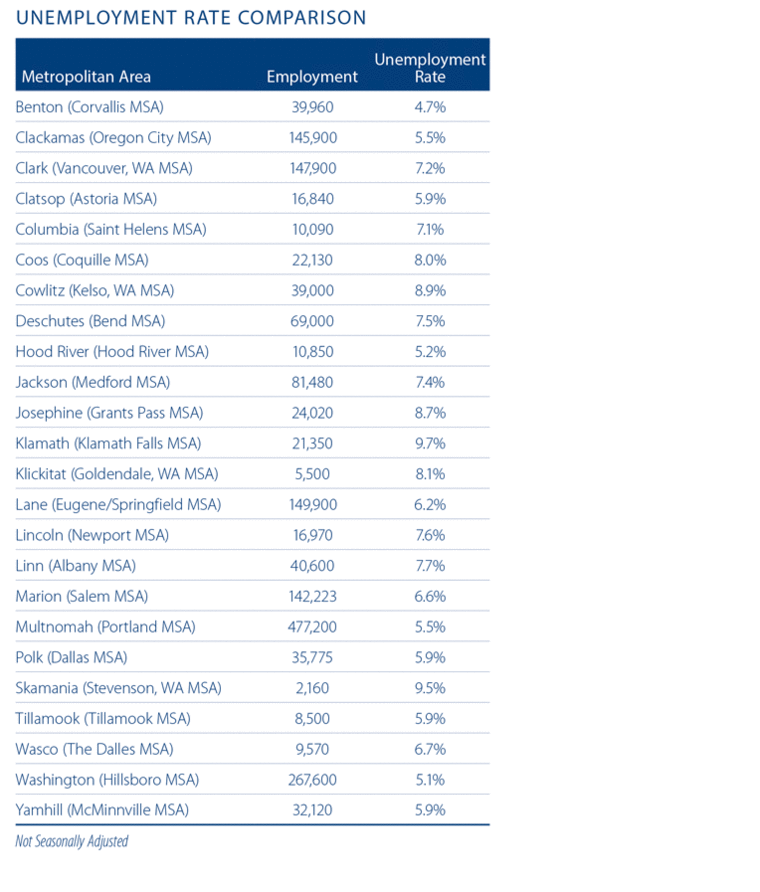
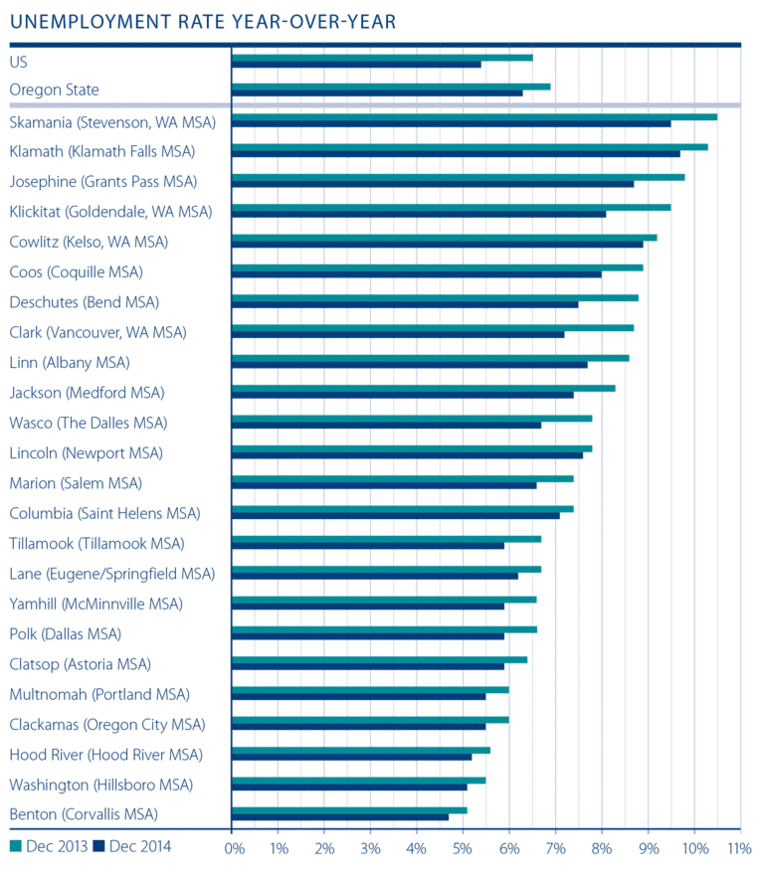
Regional Real Estate
Total sales in 2014 were 3.8 percent higher than those seen in 2013; however, inventory constraints in many markets kept this number below its full potential.
Compared to last year, the number of sales rose in all but three counties. But it is clear in many markets that transactional velocities would have been higher had there been an adequate supply of homes for sale. That said, there were several counties where transactional velocities rose well above the average and they are worthy of mention.
Year over year, sales increased by the greatest margin in Linn County (+ 17.6%). Additional double-digit gains were seen in Polk, Cowlitz, Tillamook, and Yamhill Counties.
The areas where sales slowed were all small, which makes the drop in transactions not that great—in total, the decrease in sales in Hood River, Skamania, and Benton Counties only amounted to a loss of 38 units over the previous year.

The average sale price for the region last quarter was $293,402—an increase of 6.6 percent over the fourth quarter of 2013. However, when compared to the third quarter average sale prices dropped by
3.8 percent. This is not too surprising given the fact that the sales tend to trend down, as do prices, as we run through the winter months.
Fourth quarter saw an annual gain in prices in 19 of the 23 counties surveyed, with the largest increases being in Cowlitz (+19.6%), Klickitat (+18.7%), Columbia (+13.8%), Lincoln (+12.5%), and Marion (+12.1%) Counties. There were four counties where prices fell, with Skamania County seeing the greatest drop in value compared to a year ago (-17.1%). This was followed by Klamath County (-12.2%) and Hood River County (-8.8%).
Interestingly, home prices in all but two counties (Clatsop and Skamania) are higher than seen two years ago and all but five counties have seen prices appreciate over the past five-year period.
Lack of inventory continues to be a major concern and, even though the market is still performing adequately, I am maintaining a “C+” grade.
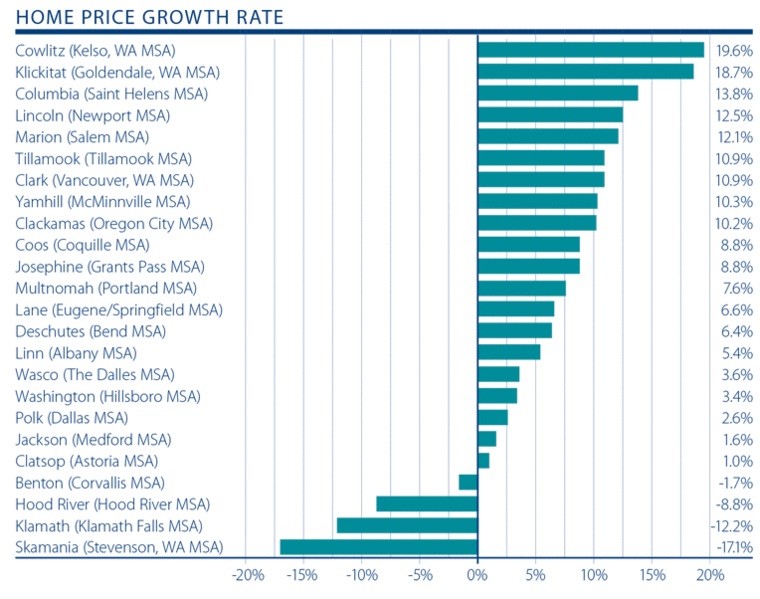

Conclusions
The Oregon economy continues to improve with a majority of the counties in this report seeing employment growth above the national average.
As compared to 2013, unemployment rates continue to fall even as the civilian labor force continues to expand. This is important as it indicates an economy where jobs are being created and improving unemployment rates are not due to people stopping their search for work.
Improvement in the region’s housing markets continues to be uneven; however, aggregate price growth is still above the national average and likely to stay that way as we move through 2015.
Interest rates in 2014 did not trend upward as I had expected. That said, I am still predicting that rates will move higher as we continue through the year, but not at excessively fast rates. By the end of 2015, I expect to see the average 30-year fixed rate below five percent, but a lot closer to it than we stand today.
My call for this year is for the regional economy to continue adding jobs at rates that exceed the U.S. as a whole. In the housing market, we should see modest growth in the number of homes for sale, and this will allow prices to continue to trend higher, averaging just below five percent home price growth in 2015.
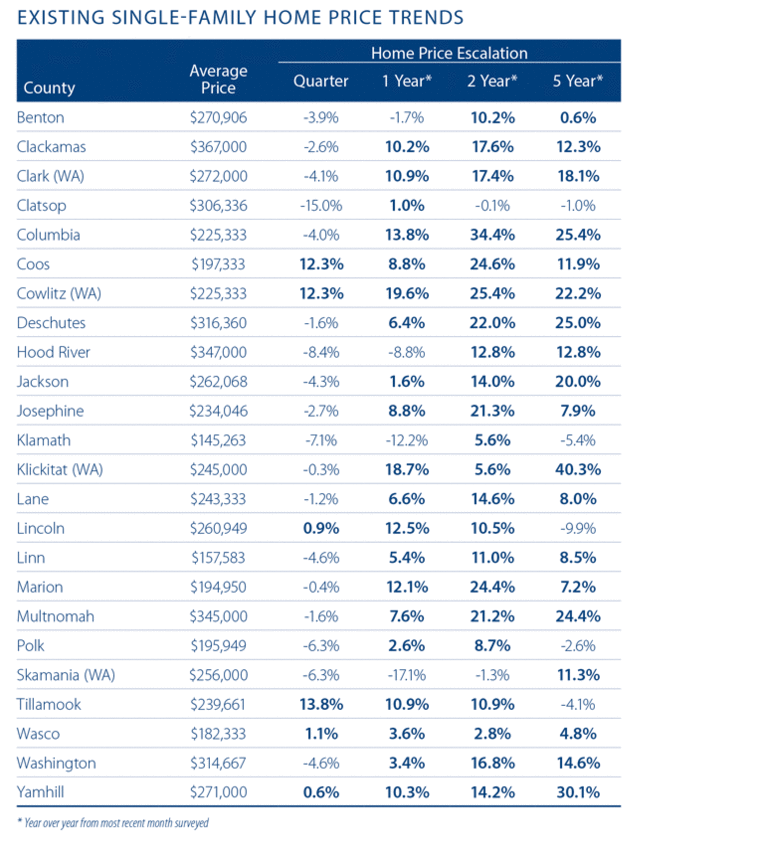
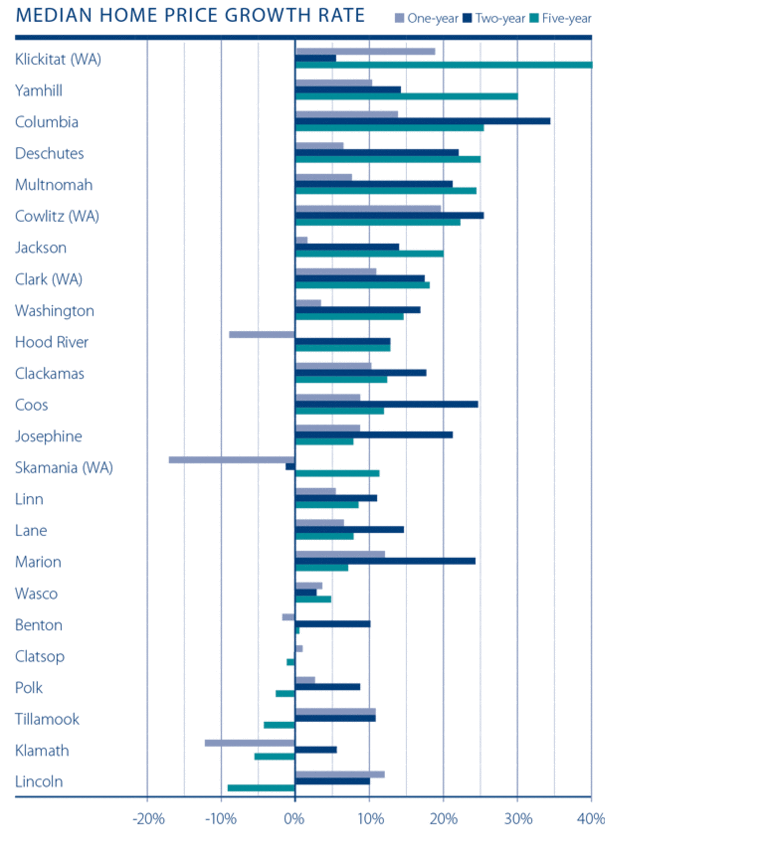
About Matthew Gardner
 Mr. Gardner is a land use economist and principal with Gardner Economics and is considered by many to be one of the foremost real estate analysts in the Pacific Northwest.
Mr. Gardner is a land use economist and principal with Gardner Economics and is considered by many to be one of the foremost real estate analysts in the Pacific Northwest.
In addition to managing his consulting practice, Mr. Gardner chairs the Board of Trustees at the Washington Center for Real Estate Research at the University of Washington; sits on the Urban Land Institutes Technical Assistance Panel; is an Advisory Board Member for the Runstad Center for Real Estate Studies at the University of Washington; and is the Editor of the Washington State University’s Central Puget Sound Real Estate Research Report.
He is also the retained economist for the Master Builders Association of King & Snohomish Counties. He has twenty-five years of professional experience in the U.K. and U.S.
He has appeared on CNN, NBC and NPR news services to discuss real estate issues, and is regularly cited in the Wall Street Journal and all local media.
 Facebook
Facebook
 X
X
 Pinterest
Pinterest
 Copy Link
Copy Link
